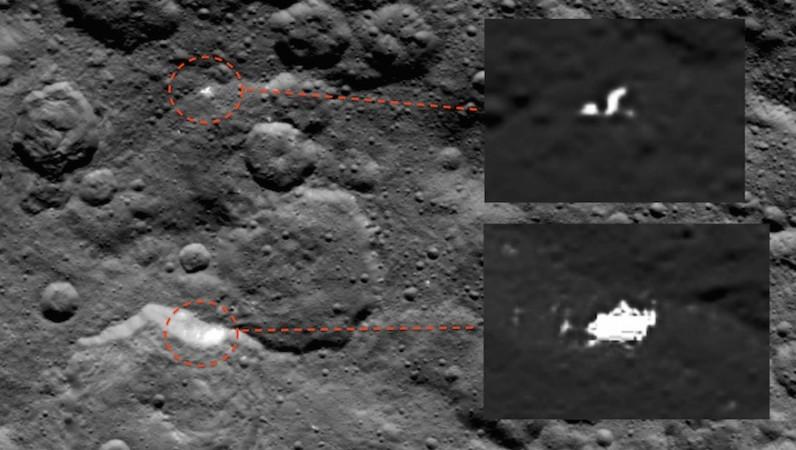
UFO (Unidentified Flying Objects) enthusiasts seemed to have started observing the surface of dwarf planet Ceres more seriously after NASA hinted the possibility of alien's existence when its scientists reportedly expressed their confusion over bright spots found on photos of Ceres. It is now reported that more white structures have been spotted in the photo of the dwarf planet.
Scott C. Waring, editor of UFO Sightings Daily website, has claimed that more bright structures have been found on NASA's image of Ceres and that they are more visible when contrast of the photo is changed.
"This new photo is a close up of Ceres in the Southern Hemisphere. I added contrast to see them more clearly. They are trying to show that there is nothing there to indicate alien life exists. They made a mistake on this assumption," wrote Waring of UFO Sightings Daily Friday. "There are two white structures in this photo, and one of them has similar cubic details that the original lights had that I reported yesterday. Looks like we are learning more about Ceres today."
It may be mentioned that bright spots seen in the images of Ceres sent by NASA's spacecraft Dawn had earlier sparked off speculations that it could be alien cities. Interestingly, several videos have been uploaded on the same and many are of the opinion that it is the proof of aliens' existence.
Meanwhile, higher resolution pictures of Ceres are expected to come soon, as NASA's Dawn spacecraft has entered a new orbit, flying at about 2,700 miles from the dwarf planet. Better quality pictures can possibly throw more light on the bright spots seen on Ceres' surface.
"The new orbit will allow Dawn's framing camera to take picture of Ceres with three times better resolution than before. The probe will fly around Ceres eight times — completing one circuit every 3.1 days — before departing for an even lower orbit June 30," according to a report by Space Light Now.

















